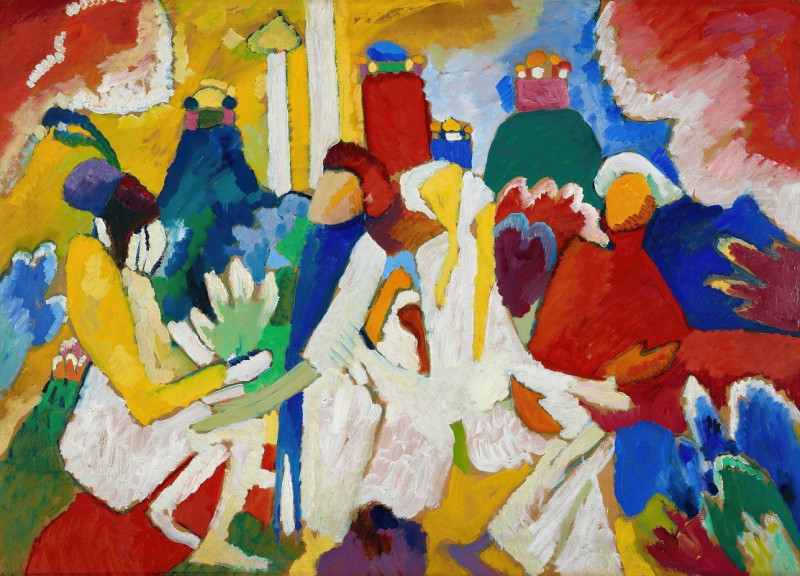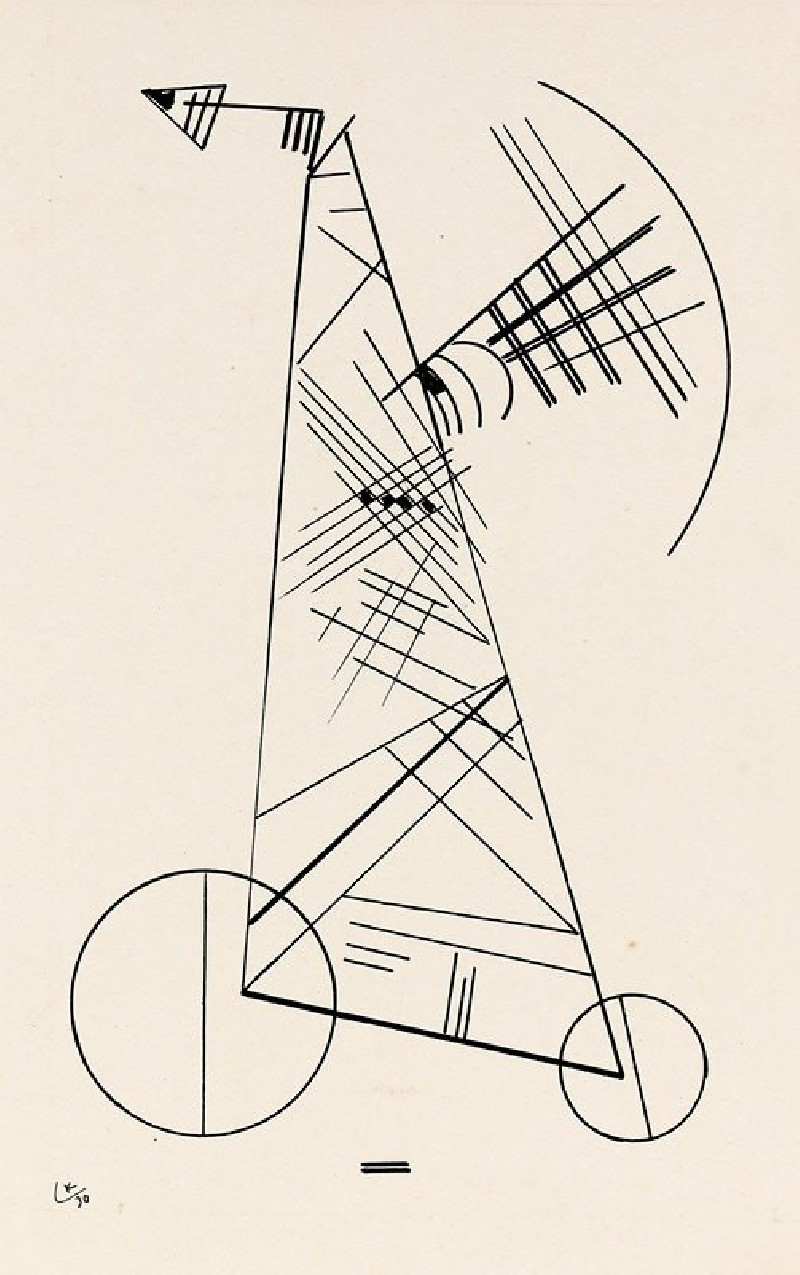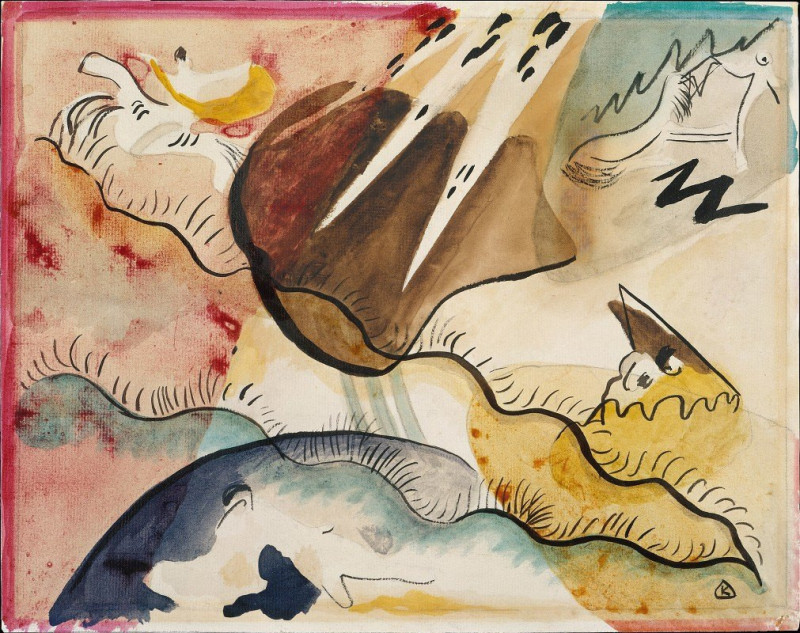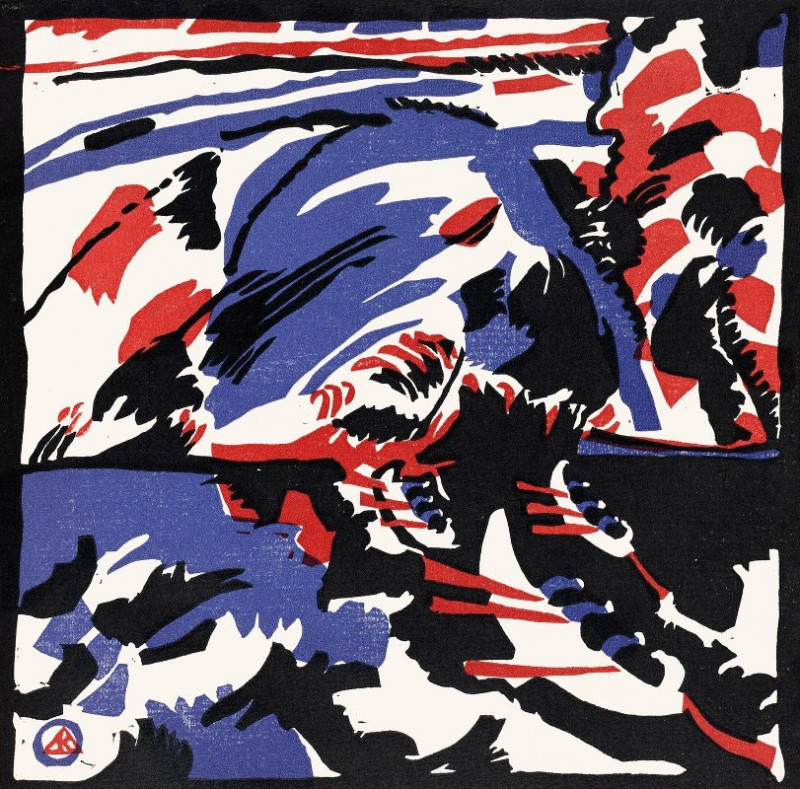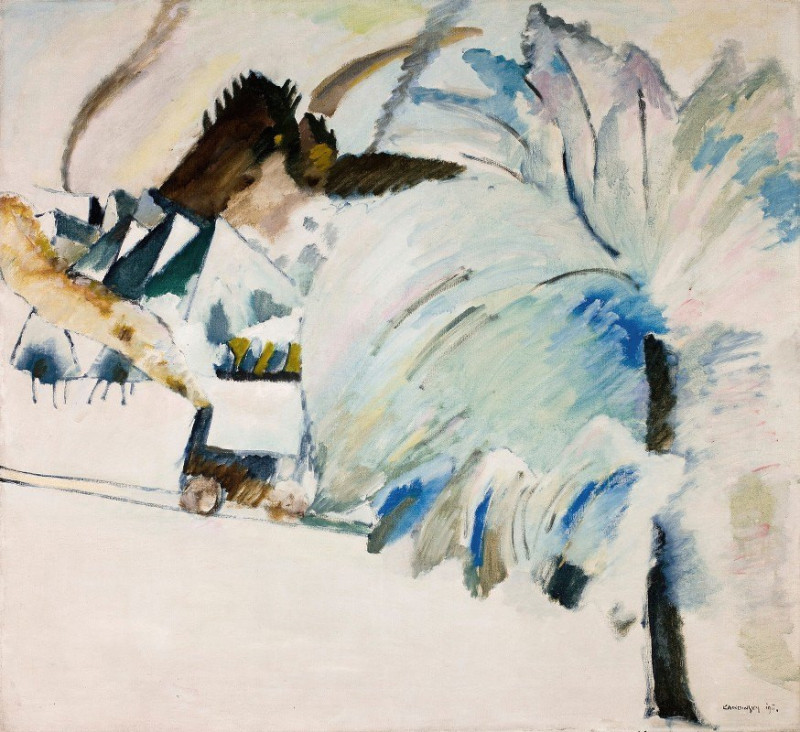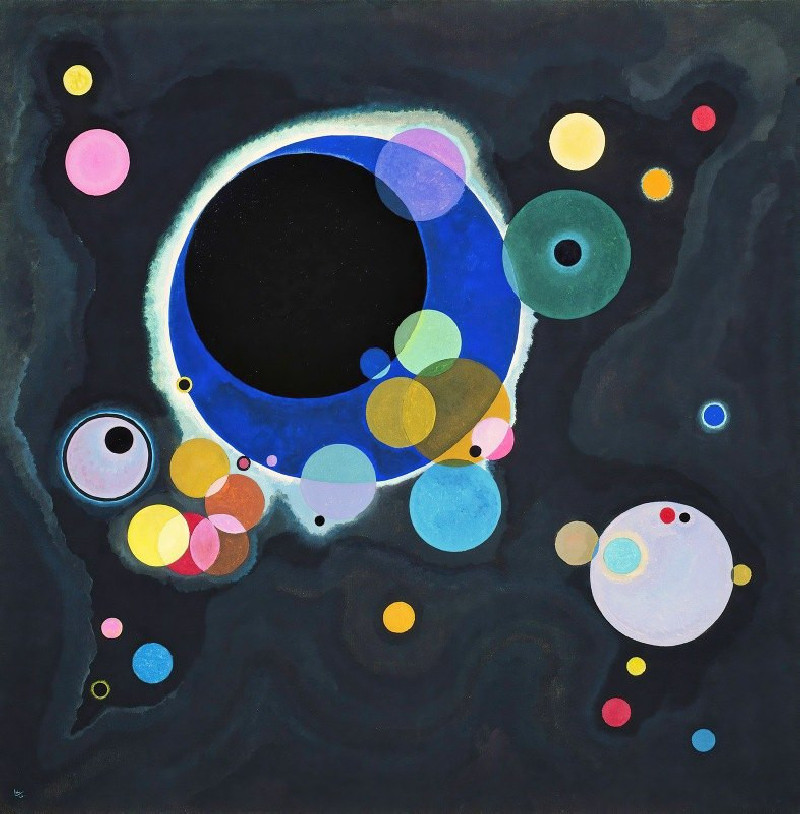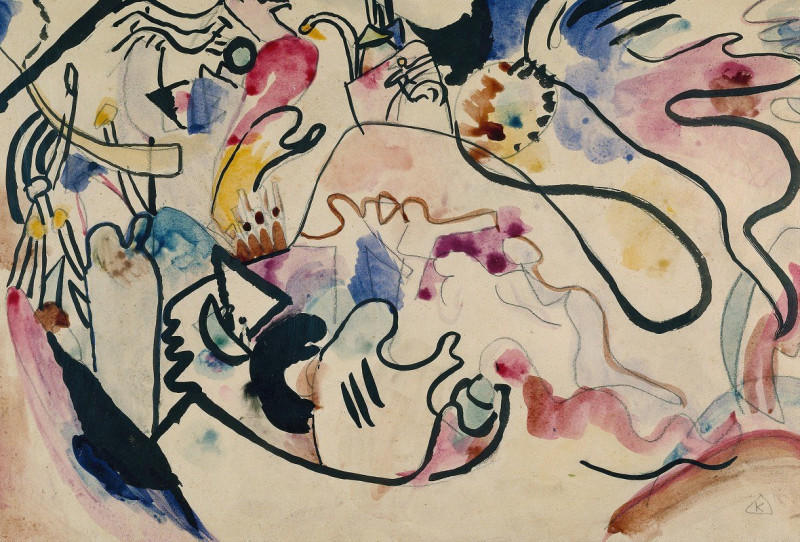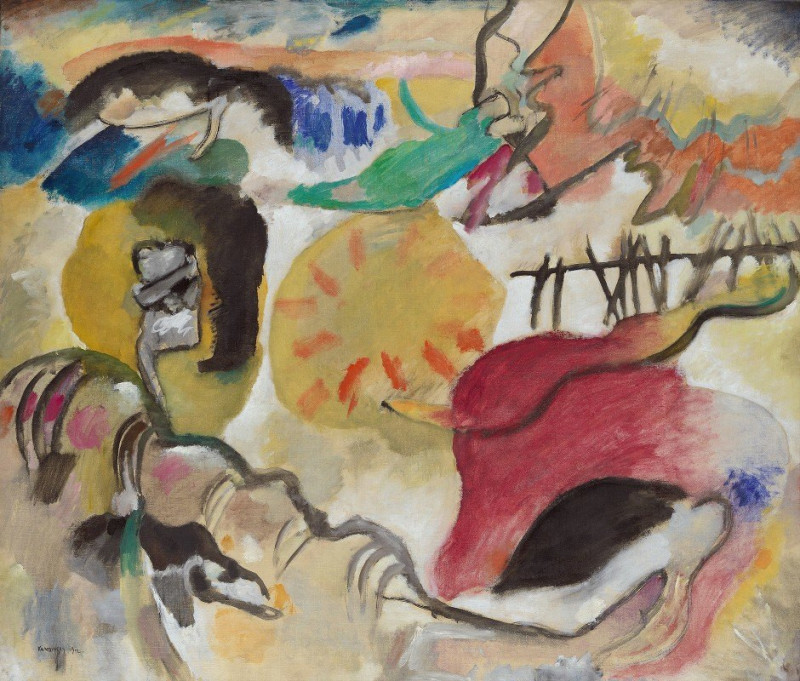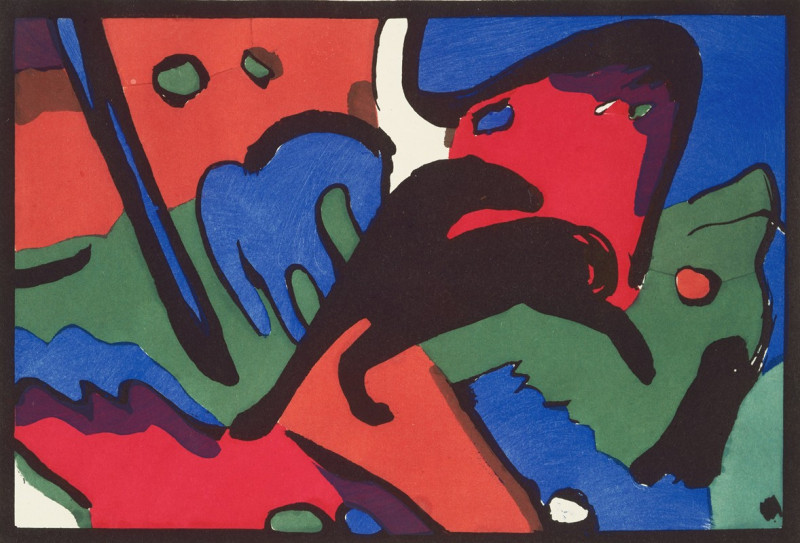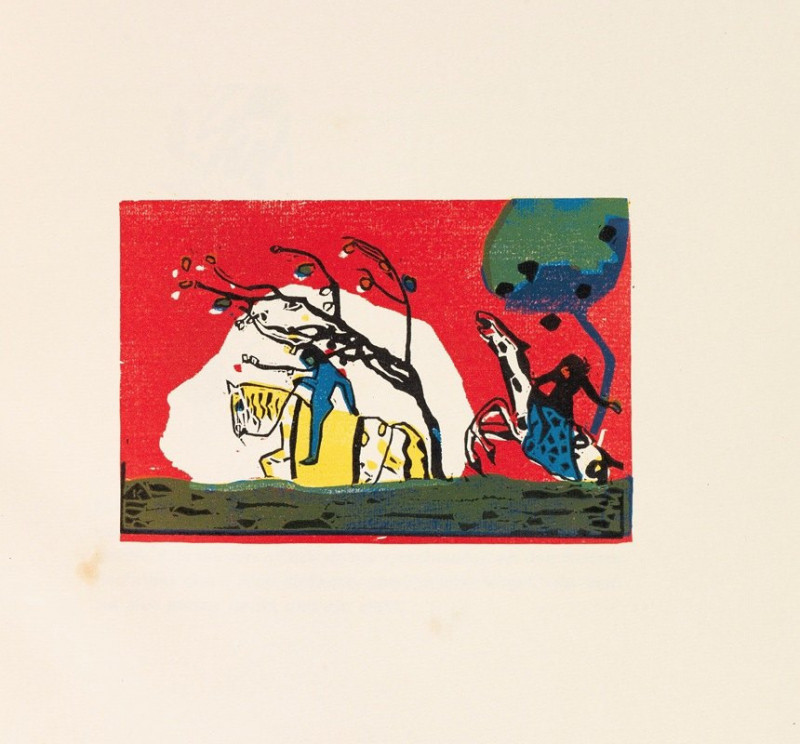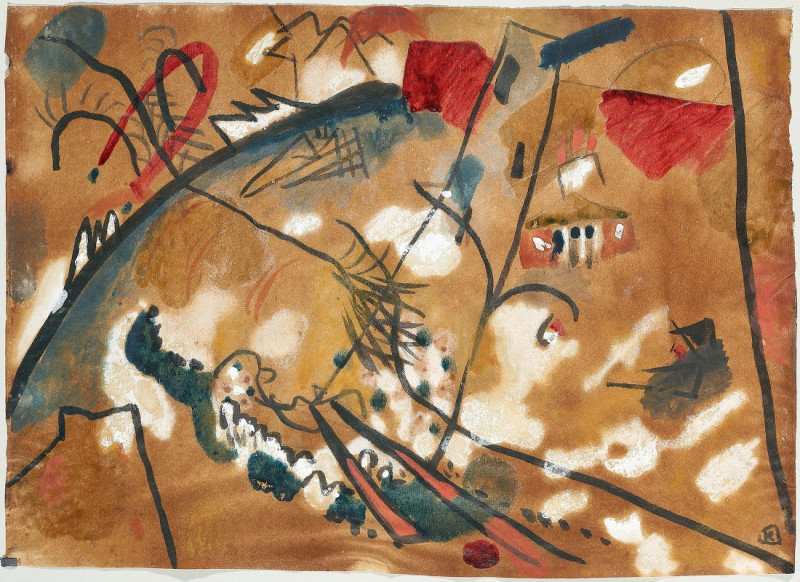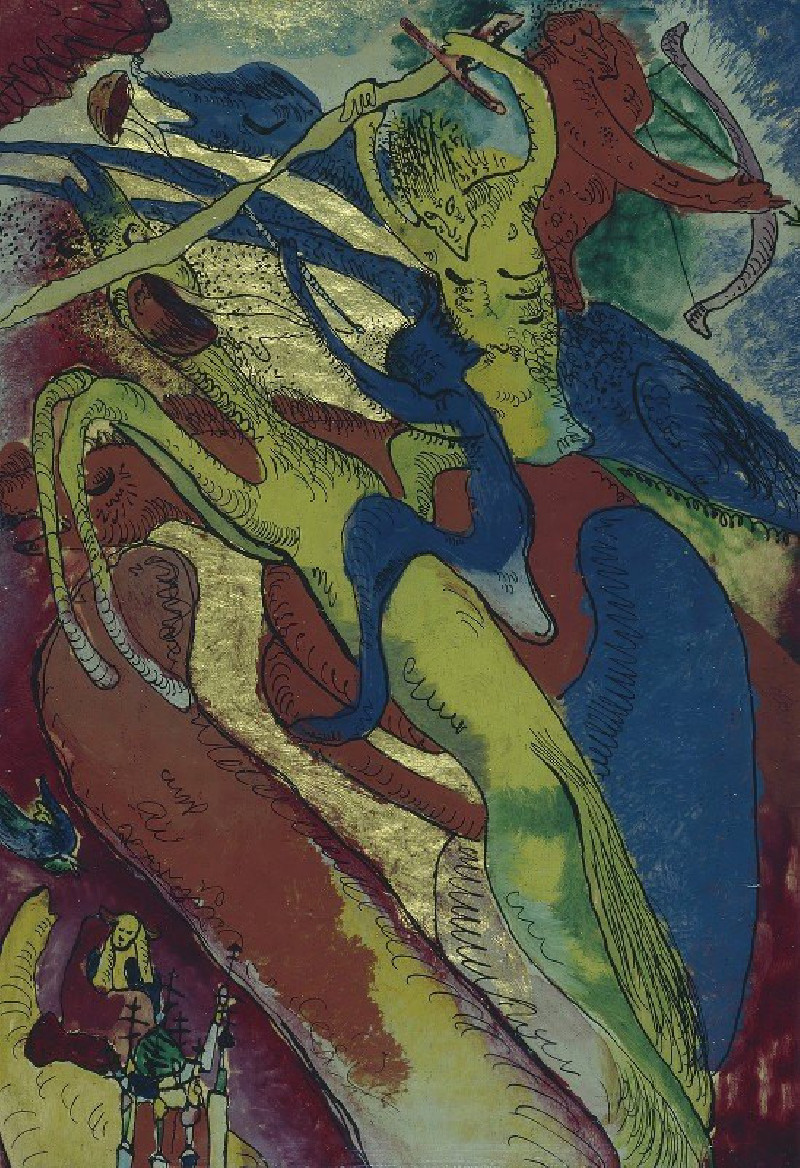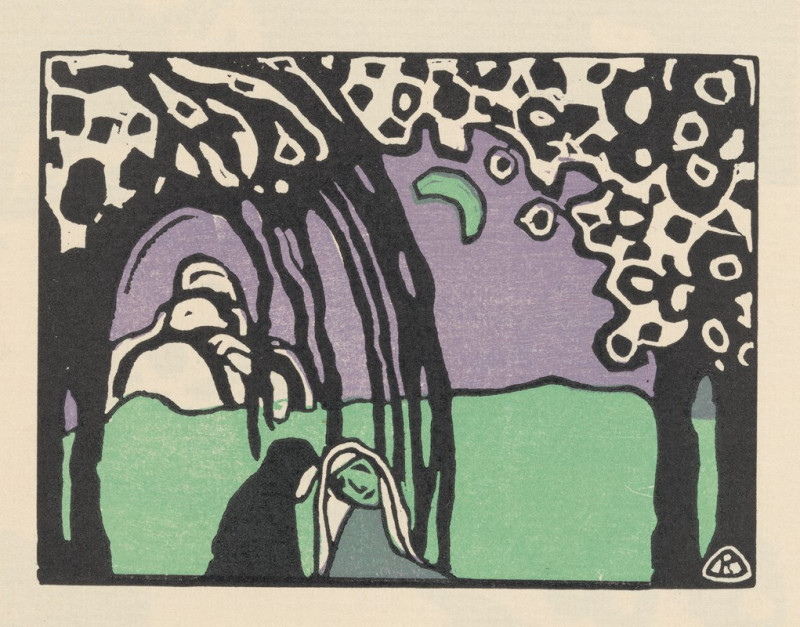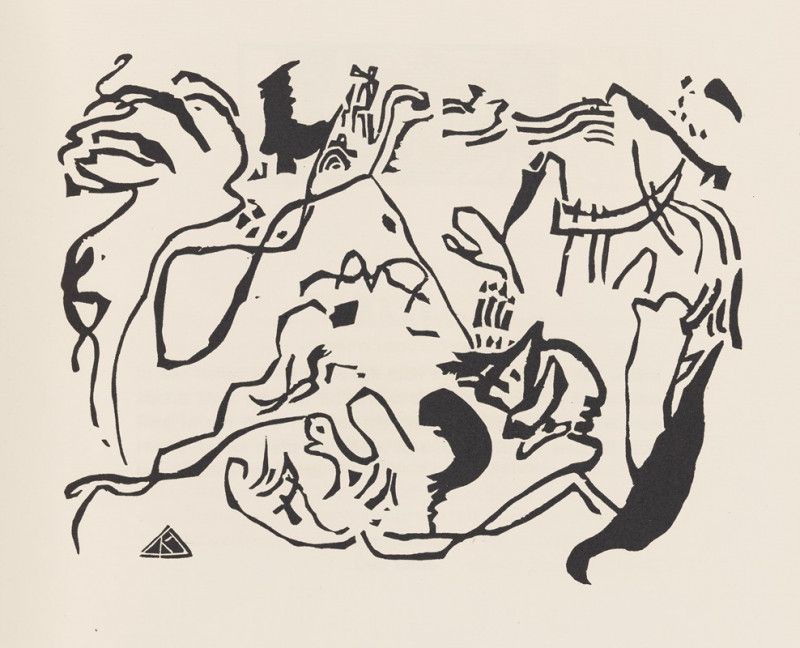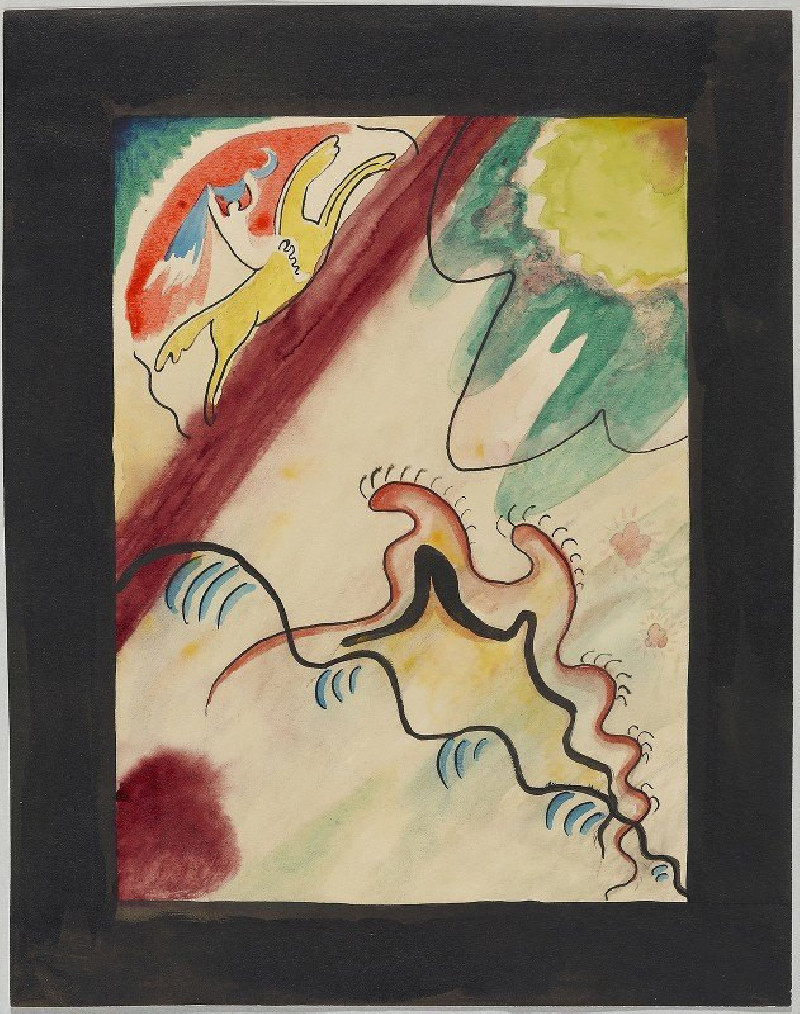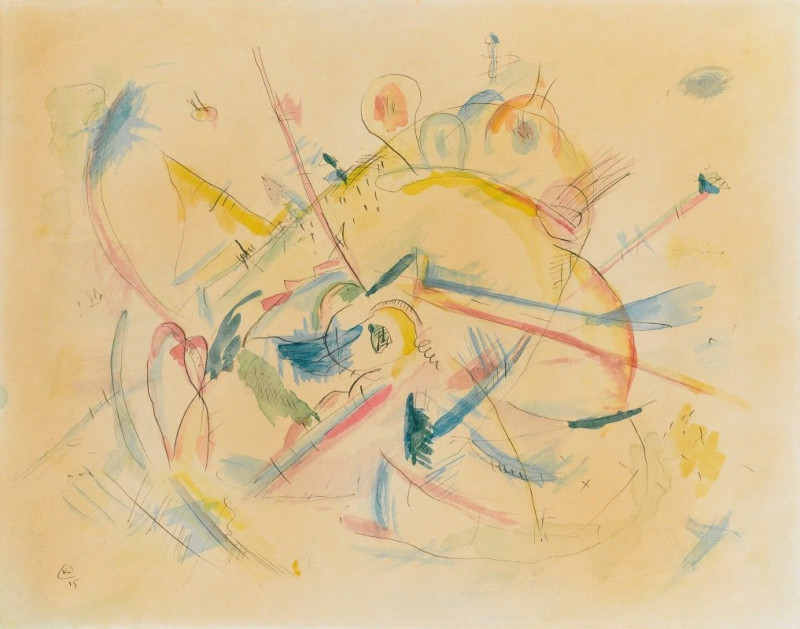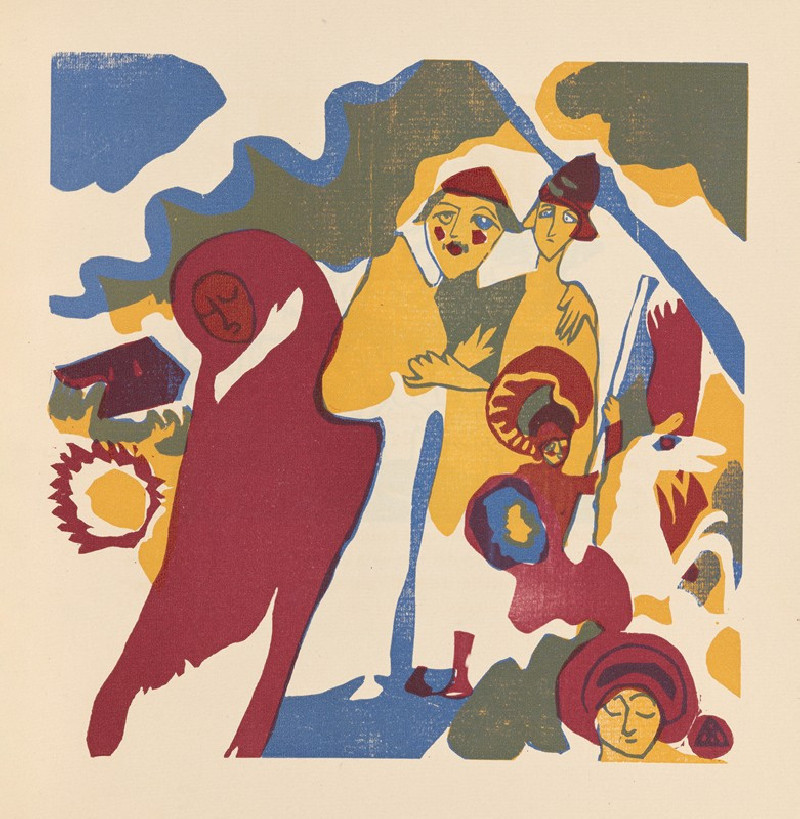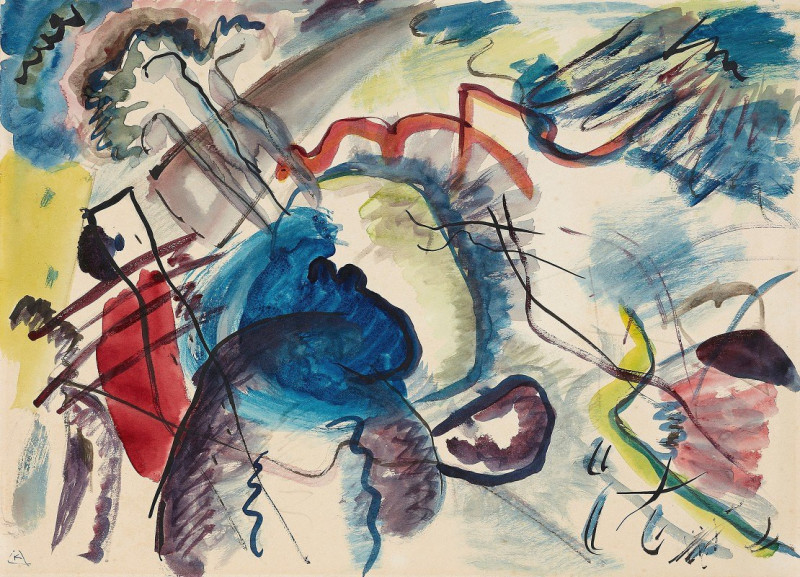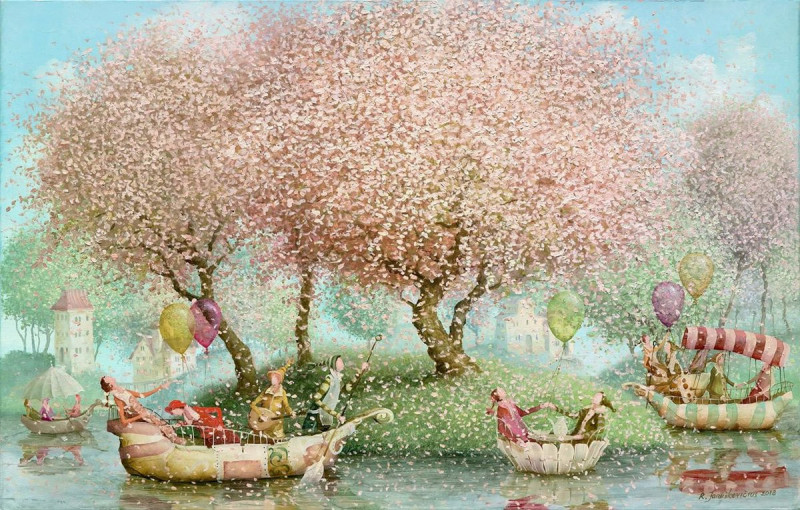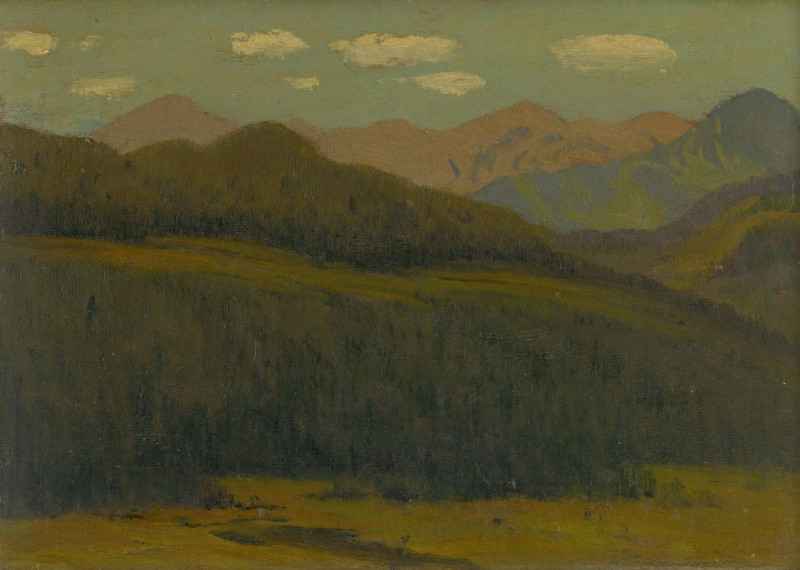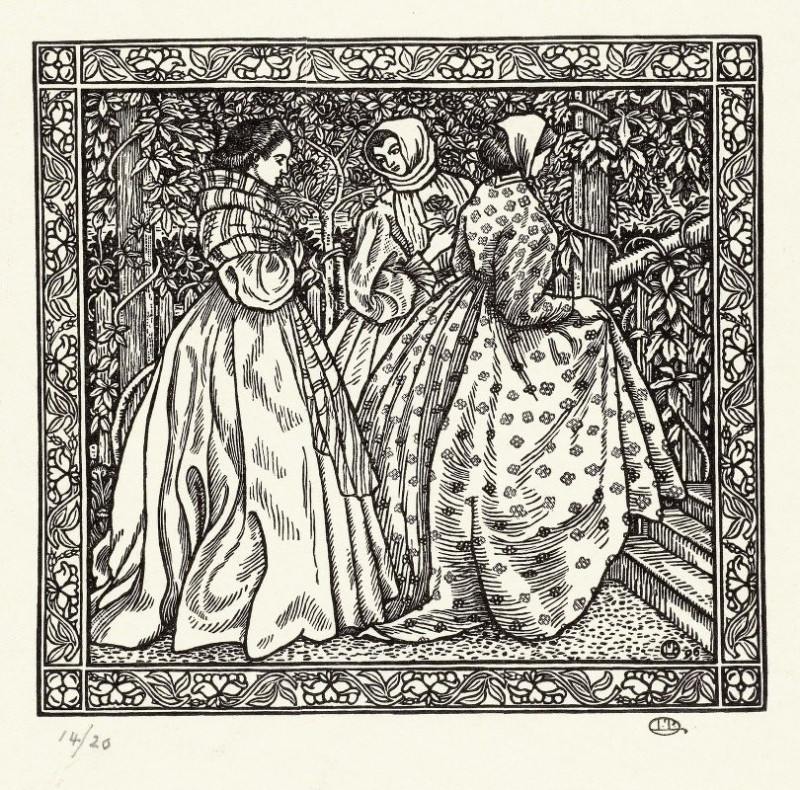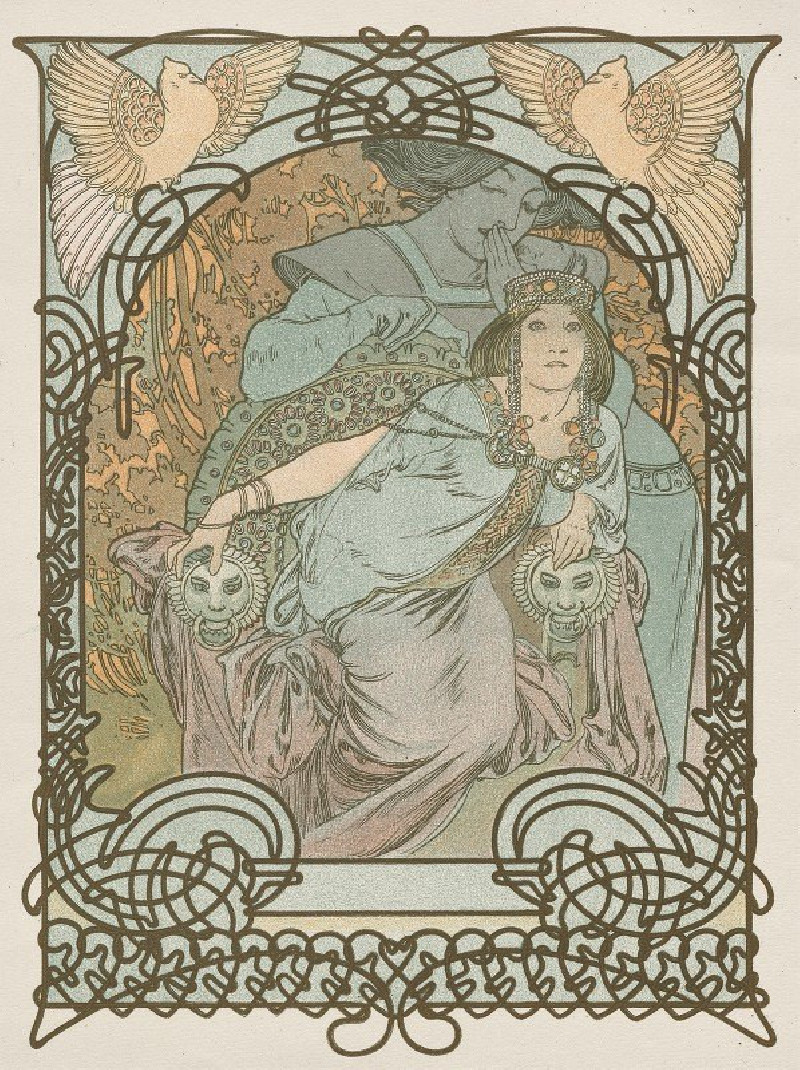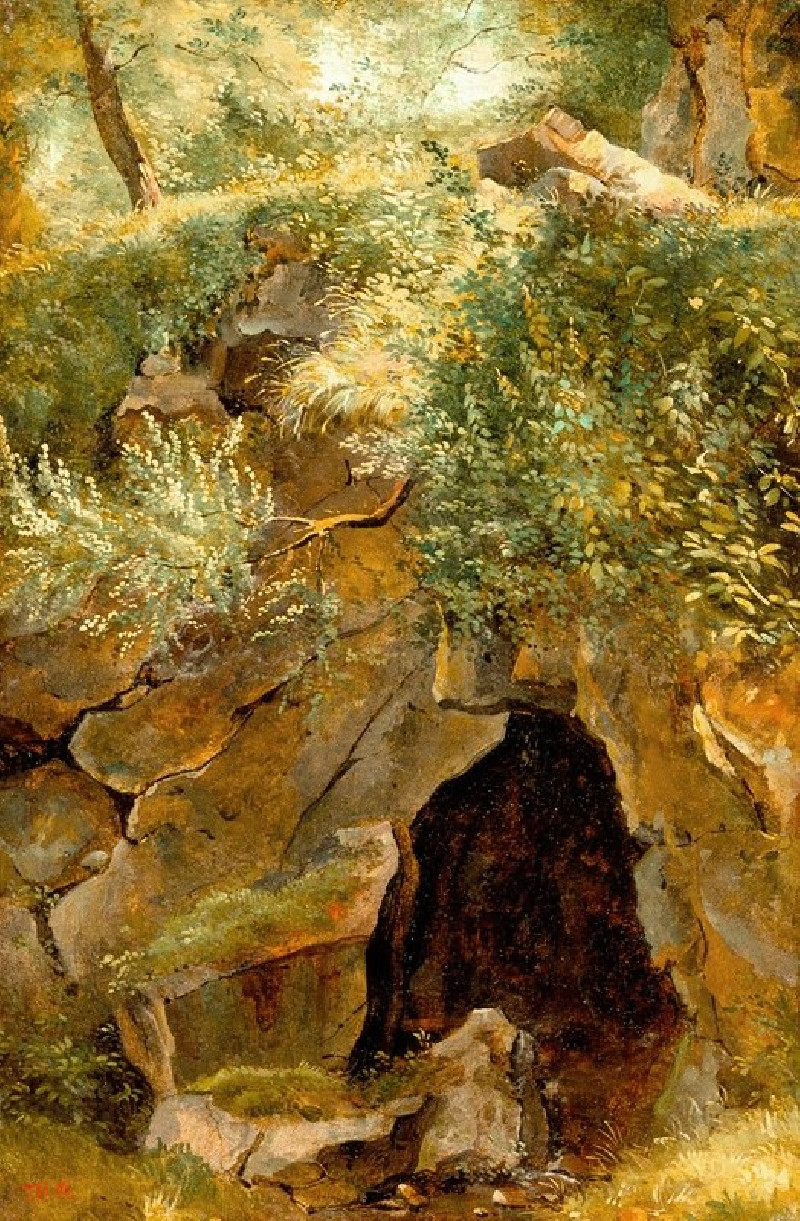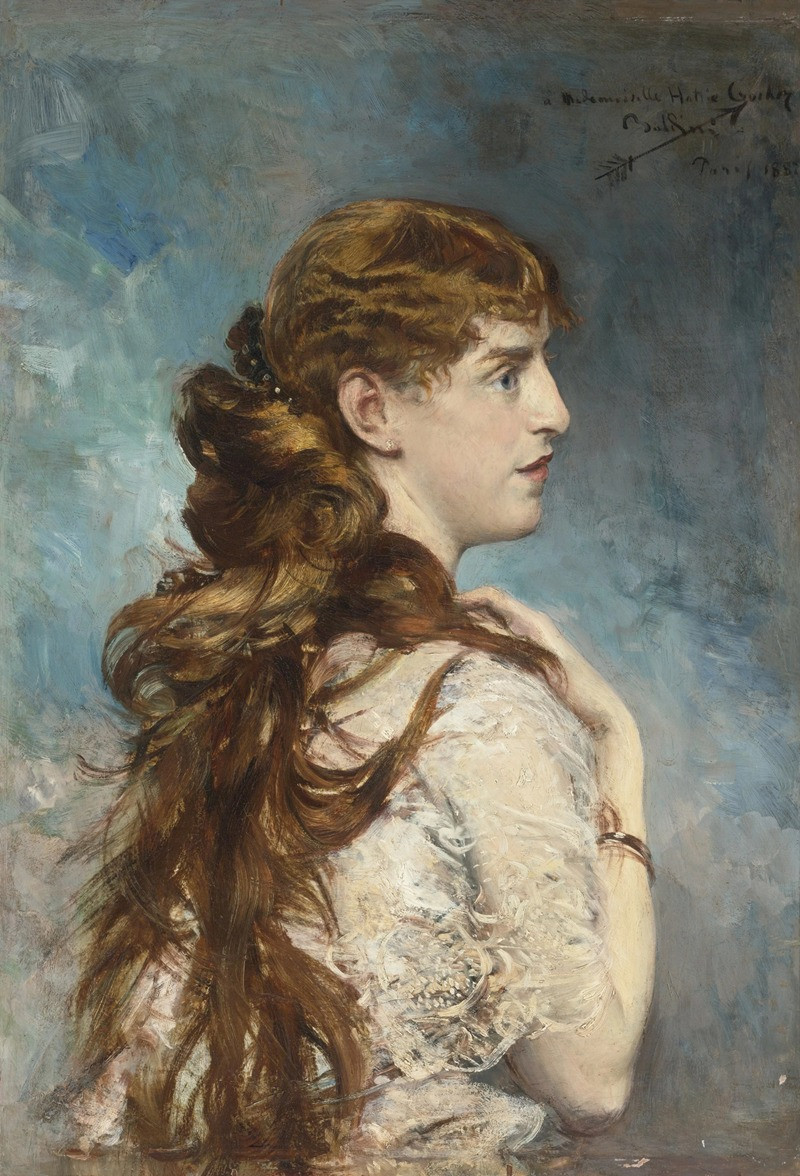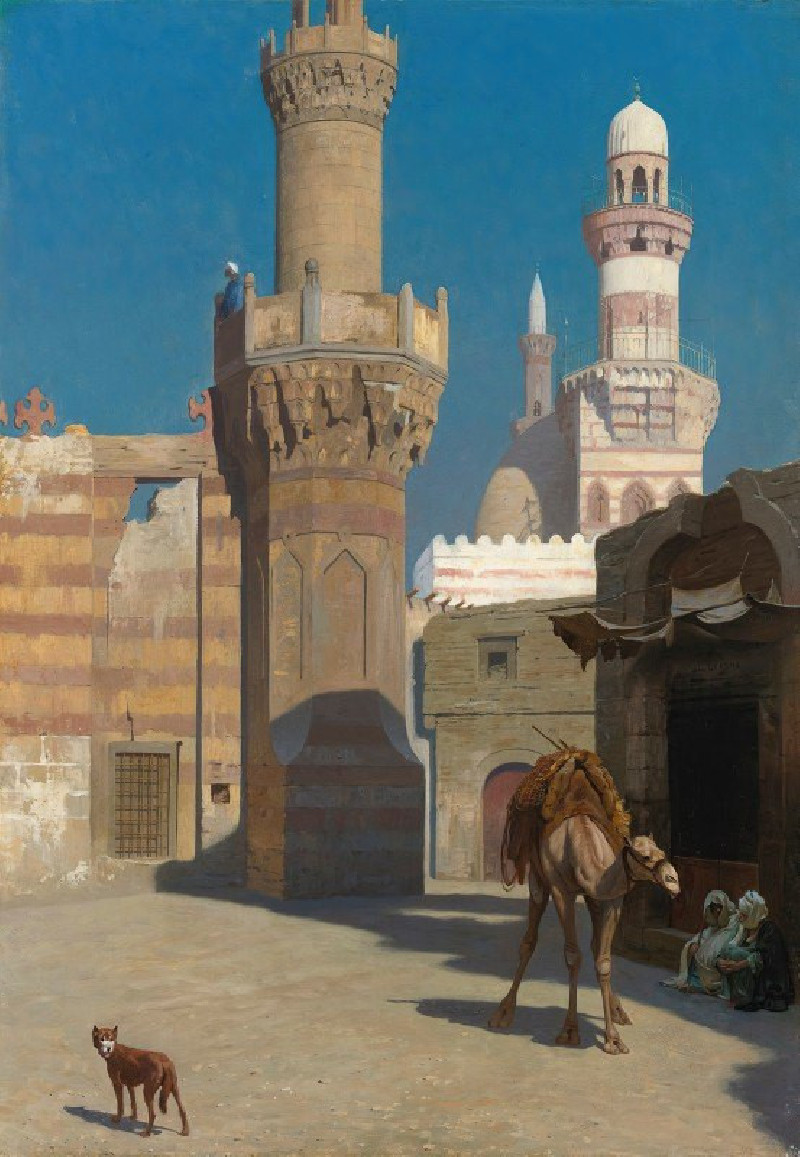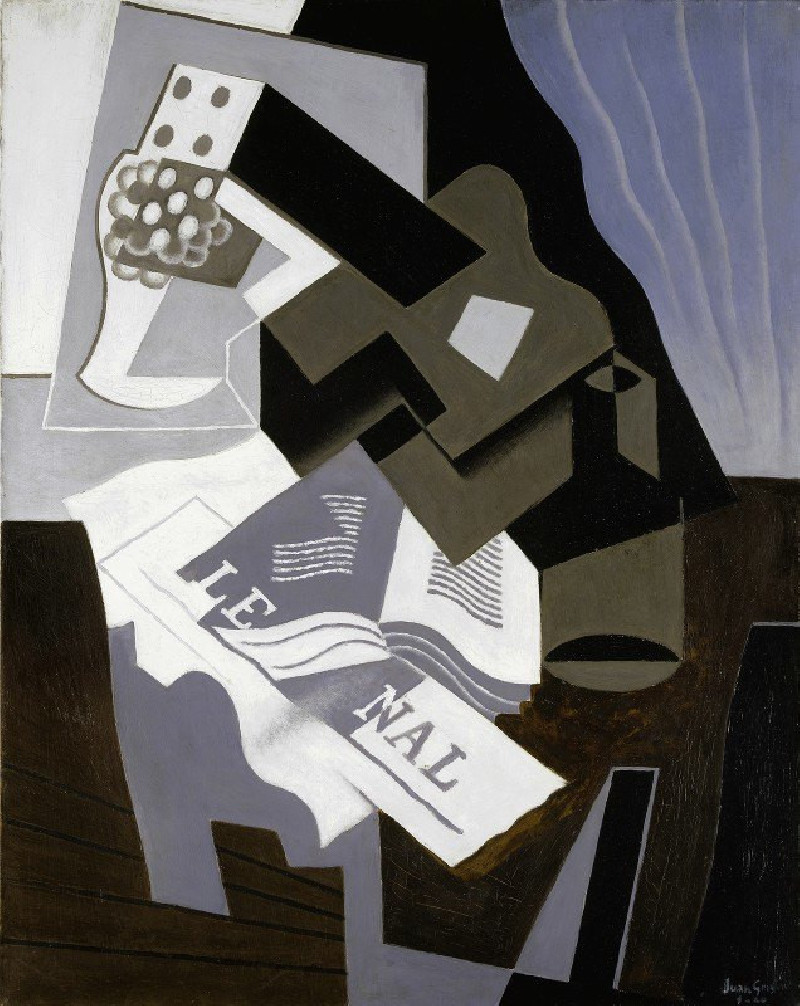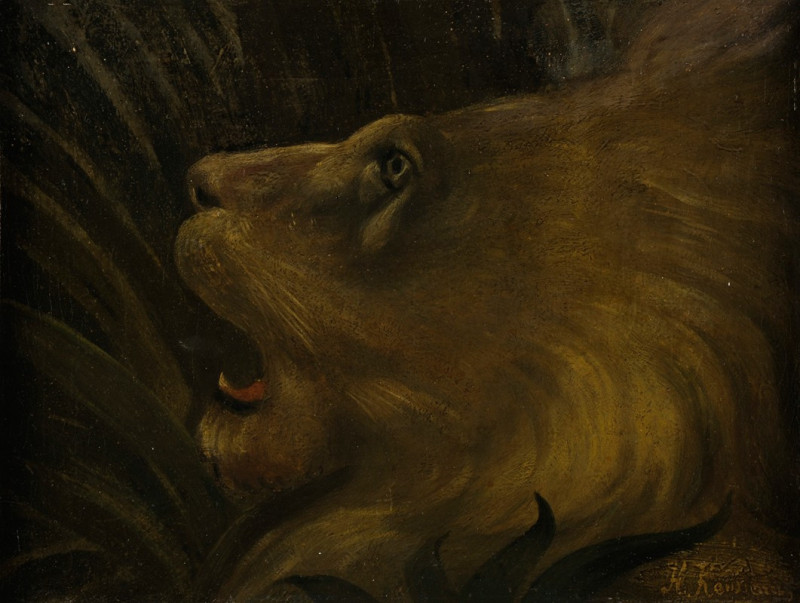Oriental (1909)
Technique: Giclée quality print
Recommended by our customers
More about this artwork
The painting "Oriental" (1909) by Wassily Kandinsky is a vibrant and colorful work that exemplifies his transition from representational art to more abstract compositions. In this particular piece, Kandinsky uses a rich palette of yellows, blues, reds, and greens, which vividly contrast to command the viewer’s attention and evoke a sense of dynamic movement.The scene depicted in "Oriental" appears busy, almost chaotic, with elements that suggest figures and objects interspersed with abstract shapes and forms. The interaction of these elements might suggest the hustle and bustle of a market or a group of people at a gathering, yet the specific details of the scene are ambiguous, leaving much to individual interpretation.Kandinsky's use of abstract forms serves as a precursor to his later work in purely abstract art, where he prioritized emotional expression over physical reality. In this painting, the abstract elements might represent his feelings or experiences related to the East, as the title suggests an "Oriental" influence, though how that influence manifests in the painting is left somewhat open-ended.Overall, "Oriental" by Kandinsky is an exemplary work that bridges the gap between the representational and the abstract, using bold colors and energetic compositions to evoke emotions and create a visually stimulating experience for the viewer.
Delivery
Returns
Wassily Wassilyevich Kandinsky was a Russian painter and art theorist. Kandinsky is generally credited as the pioneer of abstract art. Born in Moscow, Kandinsky spent his childhood in Odessa, where he graduated at Grekov Odessa Art school. He enrolled at the University of Moscow, studying law and economics. Successful in his profession—he was offered a professorship (chair of Roman Law) at the University of Dorpat today Tartu, Estonia)—Kandinsky began painting studies (life-drawing, sketching and anatomy) at the age of 30.

